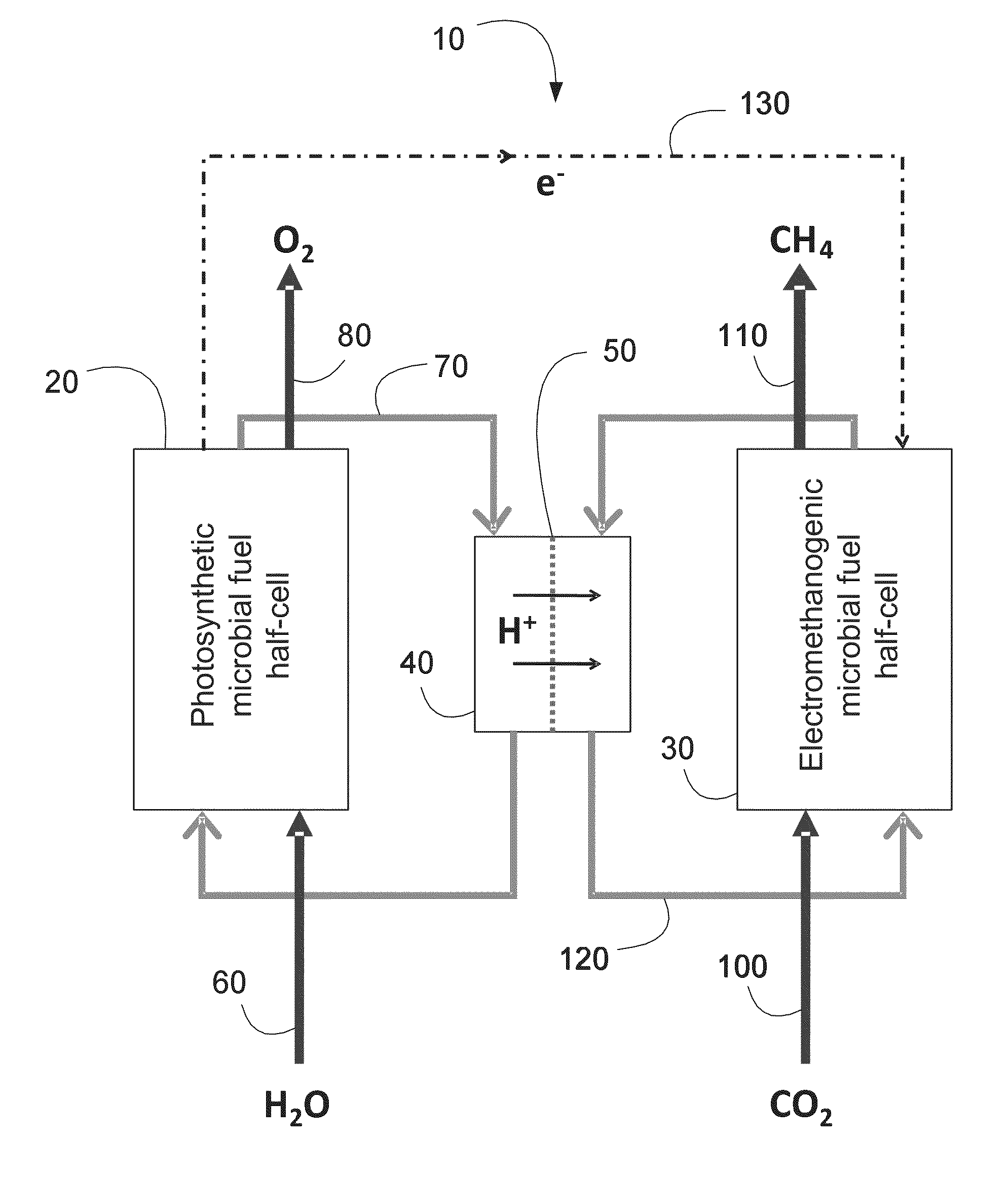Photoelectromethanogenic microbial fuel cell for co-generation of electricity and methane from carbon dioxide
a photoelectromethanogenic and fuel cell technology, applied in the direction of fuel cells, biochemical equipment and processes, biochemical apparatus, etc., can solve the problems of high amine cost, chemical degradation of amines, and significant threat to global climate stability, and achieve the effect of increasing the number of amines
- Summary
- Abstract
- Description
- Claims
- Application Information
AI Technical Summary
Benefits of technology
Problems solved by technology
Method used
Image
Examples
example
[0043]An experimental prototype apparatus 800 without microbial biofilms is shown in FIG. 6. The prototype apparatus 800 comprised a single acrylic unit cell of dimensions about 6″×6″×3″, made of two acrylic boxes 810, 850 open along the facing sides. The unit cell was assembled by screws drilled through the four corners of each half-cell such that the Proton Exchange Membrane 840 exemplified by Nafion® 117 (Nafion is a registered trademark of E.I du Pont de Nemours and Company Corp., Willmington, Del., USA) was sandwiched between two butyl rubber gaskets 845 and the acrylic half-cells 810, 850. Holes were drilled in the top and bottom of each half cell 810, 850 and barbed polyethylene hose connectors 830, 835, 870, 875 were glued to the acrylic half-cells 810, 850. Polyvinyl-chloride (PVC) tubing exemplified by Nalgene 8000-080 (Nalgene is a registered trademark of Nalge Nunc International Corp., Rochester, N.Y., USA) was used to connect the half-cells to separate acrylic reservoir...
PUM
| Property | Measurement | Unit |
|---|---|---|
| Length | aaaaa | aaaaa |
| Length | aaaaa | aaaaa |
| Length | aaaaa | aaaaa |
Abstract
Description
Claims
Application Information
 Login to View More
Login to View More - R&D
- Intellectual Property
- Life Sciences
- Materials
- Tech Scout
- Unparalleled Data Quality
- Higher Quality Content
- 60% Fewer Hallucinations
Browse by: Latest US Patents, China's latest patents, Technical Efficacy Thesaurus, Application Domain, Technology Topic, Popular Technical Reports.
© 2025 PatSnap. All rights reserved.Legal|Privacy policy|Modern Slavery Act Transparency Statement|Sitemap|About US| Contact US: help@patsnap.com



